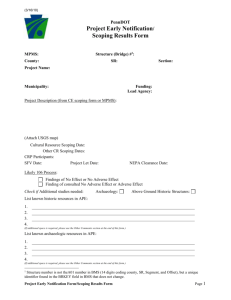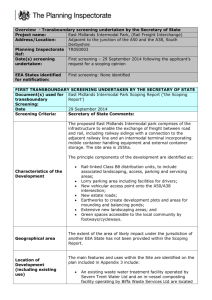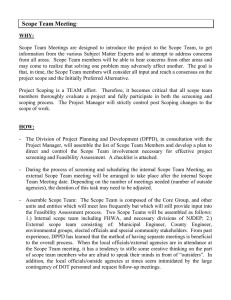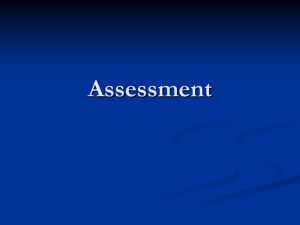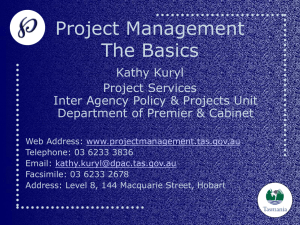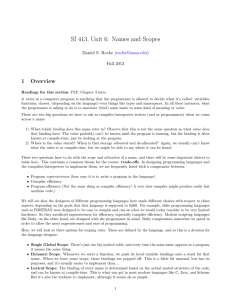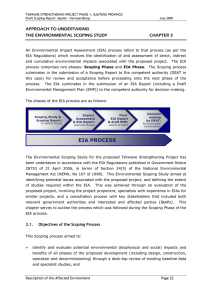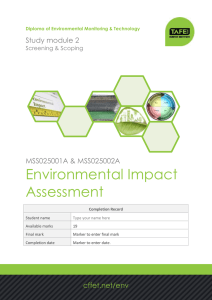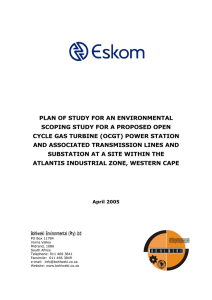MNE 697k Introduction to Social and Environmental Assessment Spring Semester 2010 Instructors: Credit:
advertisement
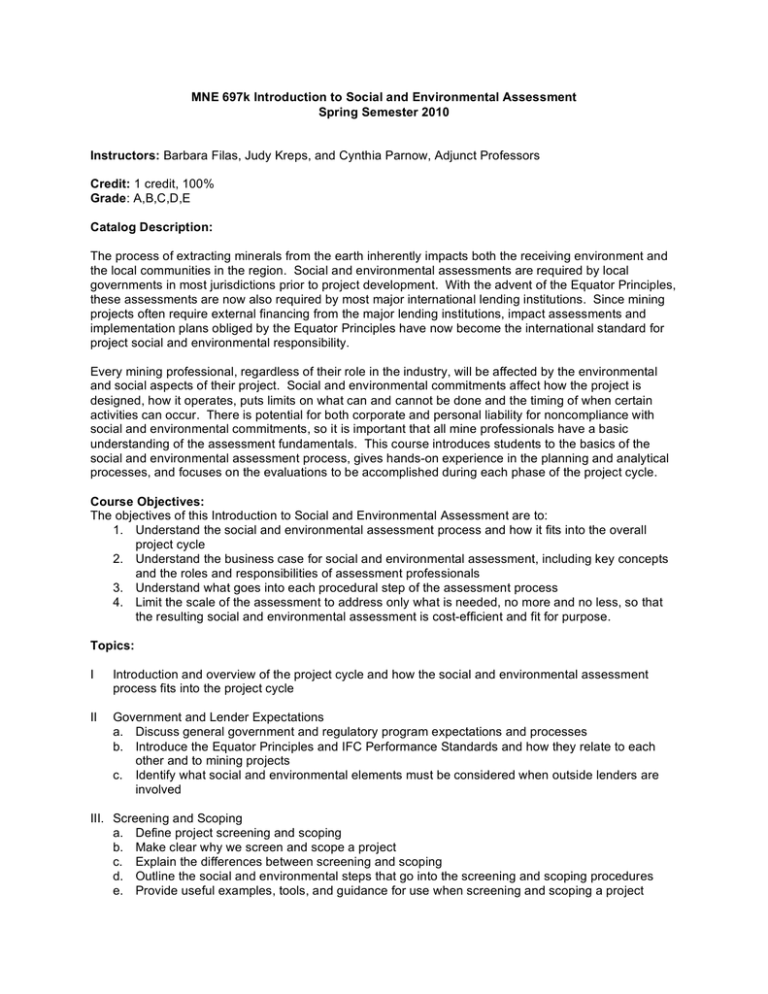
MNE 697k Introduction to Social and Environmental Assessment Spring Semester 2010 Instructors: Barbara Filas, Judy Kreps, and Cynthia Parnow, Adjunct Professors Credit: 1 credit, 100% Grade: A,B,C,D,E Catalog Description: The process of extracting minerals from the earth inherently impacts both the receiving environment and the local communities in the region. Social and environmental assessments are required by local governments in most jurisdictions prior to project development. With the advent of the Equator Principles, these assessments are now also required by most major international lending institutions. Since mining projects often require external financing from the major lending institutions, impact assessments and implementation plans obliged by the Equator Principles have now become the international standard for project social and environmental responsibility. Every mining professional, regardless of their role in the industry, will be affected by the environmental and social aspects of their project. Social and environmental commitments affect how the project is designed, how it operates, puts limits on what can and cannot be done and the timing of when certain activities can occur. There is potential for both corporate and personal liability for noncompliance with social and environmental commitments, so it is important that all mine professionals have a basic understanding of the assessment fundamentals. This course introduces students to the basics of the social and environmental assessment process, gives hands-on experience in the planning and analytical processes, and focuses on the evaluations to be accomplished during each phase of the project cycle. Course Objectives: The objectives of this Introduction to Social and Environmental Assessment are to: 1. Understand the social and environmental assessment process and how it fits into the overall project cycle 2. Understand the business case for social and environmental assessment, including key concepts and the roles and responsibilities of assessment professionals 3. Understand what goes into each procedural step of the assessment process 4. Limit the scale of the assessment to address only what is needed, no more and no less, so that the resulting social and environmental assessment is cost-efficient and fit for purpose. Topics: I Introduction and overview of the project cycle and how the social and environmental assessment process fits into the project cycle II Government and Lender Expectations a. Discuss general government and regulatory program expectations and processes b. Introduce the Equator Principles and IFC Performance Standards and how they relate to each other and to mining projects c. Identify what social and environmental elements must be considered when outside lenders are involved III. Screening and Scoping a. Define project screening and scoping b. Make clear why we screen and scope a project c. Explain the differences between screening and scoping d. Outline the social and environmental steps that go into the screening and scoping procedures e. Provide useful examples, tools, and guidance for use when screening and scoping a project IV. Impact Assessment a. Define key baseline study data requirements and methods of data collection b. Define the steps in impact assessment and mitigation planning c. Present useful tools for identifying and prioritizing social and environmental impacts d. Identify practical considerations in mitigation and impact management e. Understand the purpose and identify good practice principles for preparing reports f. Highlight the importance of integrating the social and environmental reports into the broader engineering design process V. Implementation Plan a. Understand that an integrated action plan (SEAP) is the outcome of the SEIA process b. Introduce “management system process” approach to social action planning c. Identify good practices for preparing the SEAP d. Identify the content of an action plan and clarify when discipline-specific action plans are needed VI. Discipline-Specific Action Plans a. Resettlement b. Community Development c. Vulnerable People d. Cultural Heritage f. Labor and Working Conditions g. Community Health, Safety and Security VI. Wrap-up Grading: Quizzes (2) In-Class problem solving Solving 4 different components of a social and environmental assessment case study Final paper on case study Total 40% 40% 20% Grading Policy: 90-100%=A 89-80%= B 79-70%= C 69-60%= D Less than 60%=E References: http://www.equator-principles.com http://www.ifc.org/ifcext/sustainability.nsf/Content/EnvSocStandards Recommended Prerequisites: MNE 697j Introduction to Stakeholder Engagement

